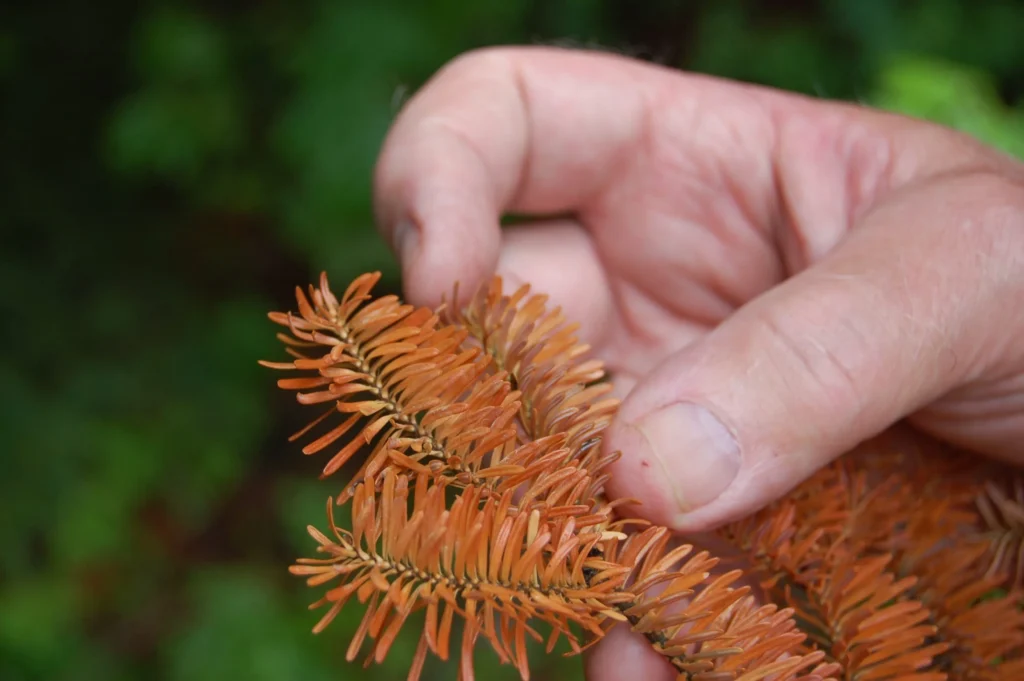By Crystal Keyamo
The prospect of future Christmases without the scent of fresh-cut fir in New Brunswick, a tree species expected to decline and take some festive cheer with it, casts a pall on the holiday season. An iconic tree, comprising around 20 percent of this province’s forests, balsam fir has faced alarming mortality rates because of climate change.
In 2018, a phenomenon called the Sudden Fir Mortality struck the region, causing healthy balsam firs to turn bright red and killing them off in a single growing season. Researchers determined that it was related to high temperatures and drought conditions that were stressing the trees and then leaving them open to mortality. As Anthony Taylor, a forest ecologist at the University of New Brunswick, remarked, “The 2018 mortality event is like a ‘canary in a coal mine’ warning of sorts.”
While Taylor emphasizes that balsam fir has not declined yet, he warns that it is predicted to decline over the coming decades based largely on modeling studies. He elaborated, “Warm/dry years can have a damaging effect on balsam fir,” and with increasingly changing climate, we would expect more hot dry summers in this region, coupled with frequent die-off events like we saw in 2018. The implications of this decline extend beyond aesthetic concerns into the threat on local economies reliant on these trees for softwood lumber production.
“Balsam fir make up over 20% of our forest. They also make up around 25% of our total wood supply for industry,” Taylor said, “With climate change, it’s expected that it will become increasingly less viable as a commercial timber species” Thousands of forestry jobs depend on those trees.

For those who cherish New Brunswick’s natural beauty, there is a sense of urgency in preserving these forests for future generations. Taylor pointed out that southern New Brunswick and Nova Scotia are particularly vulnerable areas for balsam fir due to their warmer climates. He explained that “northern N.B. has the coldest climate, so it will act as a refugium for many decades to come,” but eventually, even these areas will be affected by continued climate change.
The potential loss of the balsam fir as Christmas approaches may be a change to our landscapes but also in emotional traditions so closely bound with this tree. After all, the sweetly aromatic balsam fir has become synonymous with celebrations during the holiday season, leaving an evident void without it.
As communities consider the future of their beloved balsam firs, Taylor advocates for forest management practices that promote biodiversity and resilience against climate change. He mentioned that “some forest managers are becoming more aware of the importance of maintaining biodiversity in their forests.” However, he stressed that “the BIGGEST THING people can do to help the fir is stop climate change…FULL STOP!” With proactive measures and a commitment to sustainability, there is hope that we can protect the balsam fir and ensure its legacy endures amidst the changing climate.




